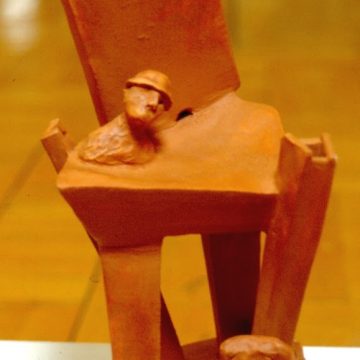Les trois graces
photo collage
Observations relative to the visual arts:
– A creative person is not necessarily ‘an artist’: ‘creative’ addresses any approach in any field that functions from new ideas, original outlook, inventiveness and risk-taking curiosity. If Plato really feared the unruliness of art, he would have discouraged insight and flashes of genius in science as much as he discouraged the practice of the arts.
– It is possible to be technically competent but not a creative or original artist. Technical competence can mask an insecure creativity or a poverty of ideas.
– It is equally possible to ne highly creative and original but to have little understanding of or competence in medium, technique or structure. Works that are technically deficient don’t last; the media can degrade unnaturally.
– Expressiveness is not in itself ‘art’. The natural world is infinitely expressive in its forms, movements and its rhythms. An elephant or monkey can be instinctively expressive and make marks that inspire the viewer incidentally. In this case, it is the viewer who is creative for being inspired and for ‘seeing’ meaning. Expressiveness in art requires the artist’s intent.
– Selling art objects does not necessarily equal a professional practice: the professional’s first focus is not on sales but on a variety of goals based on imagery, technique and concept. Commercialism and professionalism are not one and the same.
– The criticism that ‘anyone can do it’ is inane: if anyone could do it, everyone would do it. Only those who see value in it spend the time, money, and energy and risk the isolation to ‘do it’. If others don’t see the point, then no, they would, and therefore could never do it.
– To every person who looks at art and claims that ‘my child can do it’, I say please, spend every cent you have in encouraging her/him to do so: it is not something to be disdained or squandered but must be celebrated and nurtured; it is not a put-down. If the person intends it as such, I pity his/her child.
– Becoming an artist is no different than becoming an athlete. It takes as much specialized equipment and as many dedicated premises, as much financing, research, practice, focus, stamina and determination to sustain an artistic career as it does to sustain a sports career.
– Municipalities that provide such things as public swimming pools, ice rinks, arenas and gyms, public-access tennis courts, football and soccer fields, skateboarding courses, even chalets (all things individual aren’t expected to have for themselves) yet that do not provide art making facilities, studios and galleries are not serving their citizens in a balanced, equable way.
– Taking an art course in a medium at a beginner level does not mean the next course you take in that medium should be ‘intermediate’. To go from ‘beginner’ to ‘intermediate’ requires a couple of years of courses and of independent practice in that medium, even if you are ‘a genius’.
– Usually, a beginner student focuses on materials and techniques; an intermediate student focuses on materials, technique, plus on meaning and intent; an advanced student on all of those plus on concept and impact. An artist integrates all of those so deeply she/he can create a body of work independently, and attend to her/his professional goals simultaneously.
– Artists do not always male art to ‘communicate’, and ‘concept’ does not always apply to social issues. Art that has a therapeutic effect should be brought home.
– Your ‘critique’ of a finished (as in ‘exhibited’) work of art must be meaningful to or useful for you.
– If you are using art to teach, that is, if you are teaching THROUGH art, for instance, using image making to make your students address social or environmental issues, you are NOT teaching art; you are directing it, or worse, you are being a propagandist, well–intentioned as you might be. An art teacher must teach the art student HOW not what to express.







